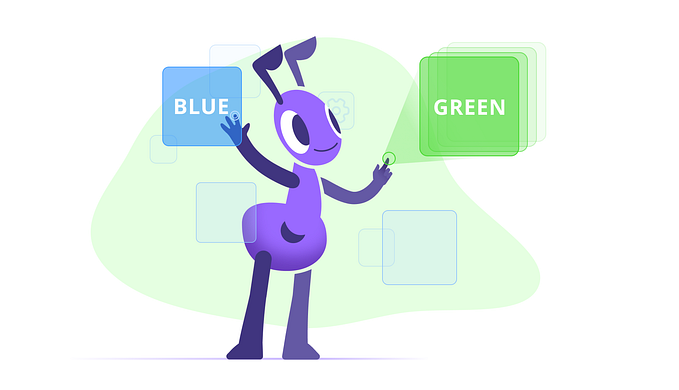Helm Create Part 2: Resources
A guide to the output of running helm create , with a focus on the resources and tests it creates.

Go to Part 1 here if you want to learn more about the templating.
Recap: We created a chart using helm create my-first-chart and we’re walking through the files. We’ve gone through the Chart.yaml
$ tree -a my-first-chart/
├── .helmignore ✅
├── Chart.yaml ✅
├── charts ✅
├── templates
│ ├── NOTES.txt ✅
│ ├── _helpers.tpl ✅
│ ├── deployment.yaml ⏳
│ ├── hpa.yaml ⏳
│ ├── ingress.yaml ⏳
│ ├── service.yaml ⏳
│ ├── serviceaccount.yaml ⏳
│ └── tests
│ └── test-connection.yaml ⏳
└── values.yaml ✅
3 directories, 11 filesCommon labels
Almost all the following files will have these same
{{ include “my-first-chart.fullname” . }}-> This will end up being “my-first-chart” if we don’t do any name overrides, and become the name of the deployment. Some folks add a suffix to this, like-nginxor whatever the resource represents.{{- include “my-first-chart.labels” . | nindent 4 }}-> These labels are often how you can query for parts of a chart, using something likekubectl get pods -l app.kubernetes.io/name=my-first-chart
deployment.yaml
Now we’re into the “real Kubernetes” files. If you don’t know what a deployment is, the k8s docs are the best thing to read. My short answer is it’s creates and controls or more containers (Pods) that you want to run in the cluster. It does this through a Replicaset . The key to a deployment is that it creates an expectation for how many of these containers will run, what volumes, service accounts, and secrets they’ll use, and how they are upgraded.
Let’s go through the templating pieces that aren’t part of “common”.
{{- if not .Values.autoscaling.enabled }}— This and thereplicaCountare relevant to thehpa.yaml, which I’ll get to in a sec. The thing to know here is that if we don’t have autoscaling enabled we run the number of replicas (i.e. how many sets of the Pods) to run. Otherwise thehpawill control this.{{- include “my-first-chart.selectorLabels” . | nindent 6 }}— Selectors are how you can designate can match aServiceto your deployment. Thenindentmakes sure that you don’t get any errors when templating the yaml files. You can see how it looks by runninghelm template .if you’re inside the folder.{{- with .Values.podAnnotations }}— This will put annotations on the pod that might be useful if you want to pass information to the running application in the form of annotations. Thiswithconstruct is a way to only add the key and values if something is provided{{- with .Values.imagePullSecrets }}— If you need to pull from a private registry, this is where you’d specify a reference to a k8sSecretthat has the credentials you’d need{{ include “my-first-chart.serviceAccountName” . }}— This is how you use the service account created by this chart (or simply referenced if you set.Values.serviceAccount.createto false){{- toYaml .Values.securityContext | nindent 12 }}and{{- toYaml .Values.podSecurityContext | nindent 8 }}— This determines what user runs the container, and any file system permissions. You can set it for all pods (PodSecurityContext) or for individual ones (securityContext), though in this starter chart they are equivalent{{ .Values.image.repository }}:{{ .Values.image.tag | default .Chart.AppVersion }}— A pretty fancy way to specify what image is pulled, using the app version if the tag isn’t specified{{- with .Values.nodeSelector }}{{- with .Values.affinity }}and{{- with .Values.tolerations }}— Various ways to specify what node a pod ends up on.nodeSelectorsare ways to match labels for a node,affinitydescribes a node that would be preferred, a more controlled way to prefer a node than a selector,tolerationsmean that the pod can handle ataintplaced on the node.{{- toYaml .Values.resources | nindent 12 }}— The CPU and memory requirements of the pod. There are sensible ways to set these, but tl;dr set the max and requested mem to the same, don’t request CPU.
A few I skipped over (the names, the service port, and pull policy) are basically what they say they are.
Phew, take a breath. That was the worst one (well the Ingress one is a bit tricky as well, but this had the most templating going on). Let’s move on to the…
hpa.yaml
Horizontal Pod Autoscaler. This is a way to make it so that pods counts scale up and down based on resource usage. It is basically something that controls the Deployment and the corresponding Replicaset that the Deployment generates. You’ll see
{{- if .Values.autoscaling.targetCPUUtilizationPercentage }}{{- if .Values.autoscaling.targetMemoryUtilizationPercentage }}
These blocks add in a target that if exceeded, the HPA will trigger a scale up, assuming you’re not at .Values.autoscaling.maxReplicas . But other than that, this file is pretty simple. Note that this scale up and scale downs are not instant; there’s always a bit of a delay. Also the algorithm is a bit funky, so be aware that the HPA might not always satisfy your needs.
The minReplicas and maxReplicas represent the range that the HPA will stay in. Exceeding the percentage for a short amount of time will scale up, while 300 seconds of being overutilized will trigger a scaleDown (though this can be configured).
ingress.yaml
This is our other difficult file to get through, so strap in. By default it’s not enabled, so you could ignore it if you don’t want to communicate with your service.yaml , but for most web application usecases you’ll need some sort of Ingress. You might want to jump to the service.yaml file before reading through the rest of this, to see what the ingress is targeting.
I wrote about Ingresses in another article if you want more details.
OK, there are lots of interesting conditionals in the form of:
semverCompare ">=1.19-0" .Capabilities.KubeVersion.GitVersionThese are because there were lots of backwards incompatible changes related to ingress classes. I’ll just pretend that we’re on 1.19+ and update the file without conditionals.
The file on 1.19+ would look something like the below. I’ll put comments inline on what I think bears explaining.
{{- if .Values.ingress.enabled -}}
{{- $fullName := include "my-first-chart.fullname" . -}} # Set variables
{{- $svcPort := .Values.service.port -}} # To reduce copy paste
apiVersion: networking.k8s.io/v1
kind: Ingress
metadata:
name: {{ $fullName }}
labels:
{{- include "my-first-chart.labels" . | nindent 4 }} # Indent 4 times
{{- with .Values.ingress.annotations }}
annotations: # Annotations that can alter properties of the Ingress
{{- toYaml . | nindent 4 }}
{{- end }}
spec:
{{- if .Values.ingress.className }}
# Used to map to the Ingress Controller, described in my other article
ingressClassName: {{ .Values.ingress.className }}
{{- end }}
{{- if .Values.ingress.tls }} # HTTPS/TLS secured routes
tls:
# Range means this part operates as a loop over list elements
{{- range .Values.ingress.tls }}
- hosts:
{{- range .hosts }}
- {{ . | quote }} # Puts things in quotes... pretty clear haha
{{- end }}
secretName: {{ .secretName }}
{{- end }}
{{- end }}
rules:
{{- range .Values.ingress.hosts }} # Non TLS based domains/paths
- host: {{ .host | quote }}
http:
paths:
{{- range .paths }}
- path: {{ .path }}
{{- if .pathType }} # This is pretty fancy,
# but if .pathType is a property of the data
# we're looping over
pathType: {{ .pathType }} #
{{- end }}
backend:
service:
name: {{ $fullName }}
port:
number: {{ $svcPort }}
{{- end }}
{{- end }}
{{- end }}The example provided, if enabled, creates an ingress at the domain and path chart-example.local/ that will map to the service, which we’ll get to right now.
service.yaml
A service. What a generic name. This is the layer overlaying the pods created by the Deployment. that allows other services within Kubernetes or the Ingress to communicate with the application. It has 3 essential parts
{{ .Values.service.type }}— There are four of types, but for this exampleClusterIPis what we’ll use, meaning it will only be used internally.{{ .Values.service.port }}— The port that otherServicesor anIngresscan communicate to thisServiceon, also in this case it’s mapped to the same port as the ones that theDeploymentexposes{{- include “my-first-chart.selectorLabels” . | nindent 4 }}— This section underselectoris the critical piece that binds theServiceto thePodsrunning from the previously discussedDeployment
serviceaccount.yaml
This file is the most vanilla. The ServiceAccount by default doesn’t do very much, but it’s a best practice not to use the default. If you want to give your application more behaviors, generally you have to add in some Role Based Access Control (RBAC) to the ServiceAccount.
For using the service account with cloud providers is the .Values.serviceAccount.annotation comes in handy. It can let you use IAM Roles for Service Accounts in AWS or Workload Identity for GCP.
tests/
Any files in this folder will be installed but only deployed when using helm test . These come across as helm hooks, you can read more about helm test here.
test-connection.yaml
This is a bizzare resource. It’s of type Pod , but if you run helm test after installing the chart, you’ll find that a Job gets created and spawns this Pod. The annotation “helm.sh/hook”: test is what allows helm to understand how to control the lifecycle of this Pod.
As it is, it will run a wget chartname:servicePort , which will fire off fine if the service and pods are running. Adding other helm tests into this folder will run them in serial, though you can pick them by name with helm test --filter
That’s all folks! Thanks for reading. Hopefully helm create is a little clearer to you.






